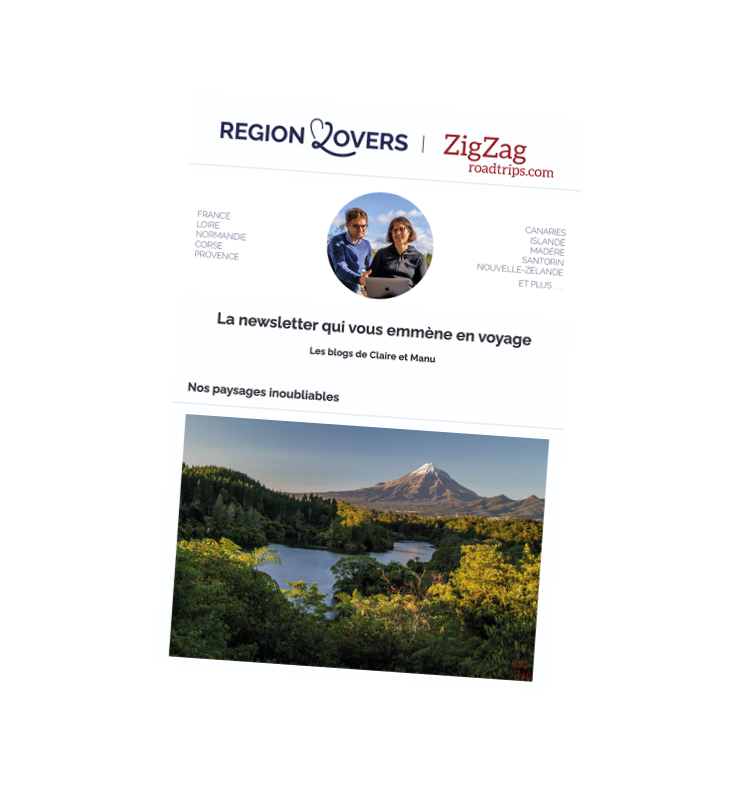A Monaco getaway? Don’t miss a visit to the Oceanographic Museum! This must-see institution of the principality was inaugurated in 1910, in accordance with the wishes of the prince of the time, Albert I. It’s famous for its aquarium, but also for having been run by Commandant Cousteau, France’s most famous ocean explorer. Thanks to its collection of over 1,000 objects, the marine world will no longer hold any secrets for you!
In this article, you’ll find some useful tips to help you prepare for your visit and have a wonderful time!
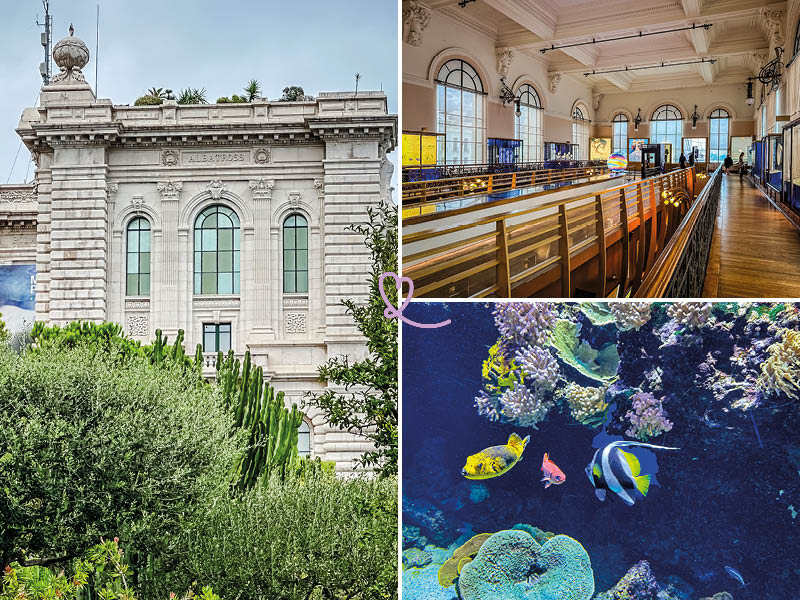
This guide is completely independent, based on our experiences. We visited the region anonymously, making our own choices and paying our bills in full.
Why visit the Oceanographic Museum?
Is the museum worth it? Our opinion:
Yes, it’s well worth a visit. In fact, it’s a must-see, which is why we listed it first in our article on Monaco’s best museums. With its impressive scale, it dominates the Rocher district, alongside the Prince’s Palace and the cathedral. We particularly enjoyed looking for all the decorative motifs evoking the marine world in its architecture. The aquarium, with over 6,000 specimens, was awe-inspiring. Finally, we learned a great deal about ocean exploration in the stunning cabinet of curiosities and the Albert I room.
It’s one of Monaco’s best activities!

Why is it famous?
The museum is famous for many reasons. Firstly, it was founded by Albert I in 1889. Known as the “Navigator Prince” for his scientific campaigns, he decided to create a museum, a laboratory and a foundation, as well as the Institut Océanographique de Paris. Then, from 1957 to 1988, the museum was run by Commandant Cousteau, still regarded today as France’s greatest explorer. Last but not least, it features one of the world’s oldest aquariums. We therefore recommend this highly diversified tour.
It welcomes 650,000 visitors every year! For a worry-free visit, book your ticket now.

Our favorite moments
You’ll find the details of our visit later, but we can’t resist sharing our favorites with you right now:
- The Mediterranean section of the aquarium: we were able to appreciate the diversity of marine species in the region and observe some impressive ones, such as a large moray eel!
- The Albert I room (or physical oceanography room): we really appreciated the innovative scenography of this historic room, which highlights the great princely oceanographic expeditions.
- The Whale Room (or Applied Oceanography Room): an immersive experience. It plunged visitors into the Far North and the oceans to convey a message of warning about global warming.

WHERE TO STAY IN Monaco
Option 1: In Monte Carlo
Discover luxury palaces in Monaco’s most sought-after district:
- Hotel de Paris – see prices, pictures and availability
- Hermitage Hotel – see prices, photos and availability
- Hotel Métropole – see prices, photos and availability

Option 2: Larvotto
Close to Larvotto beach, you’ll find some splendid resort hotels.
We recommend..:
- Monte-Carlo Bay Hotel & Resort – view prices, pictures and availability
- Le Méridien Beach Plaza – view prices, pictures and availability

Option 3: At Port-Hercule
Boutique hotels, with superb views of the port and the Rock.
- Hotel Miramar – prices, pictures and availability
- Port Palace – see prices, photos and availability

History in brief
In 1889, Prince Albert I, Sovereign of Monaco, presented his collections at the Exposition Universelle de Paris, compiled from his many scientific campaigns around the world. Given the success of this presentation, the Prince decided to create the museum, which was inaugurated in 1910. From 1957 to 1988, Commandant Cousteau, the famous French oceanographer who invented the first self-contained diving suit, directed the museum. We actually saw one in the cabinet of curiosities!

With its collection of over 1,000 objects and its aquarium housing over 6,000 specimens, the institution is a benchmark in oceanography. For some years now, the museum has been committed to the conservation and reproduction of endangered species. Since 2010, it has benefited from a renovation and beautification program. We enjoyed its innovative scenography throughout our visit! Don’t wait any longer to discover it and book your ticket now.

Access: Oceanographic Museum, Monaco
Where is the museum?
The museum is located on Avenue Saint-Martin in the Principality of Monaco (98000).
- It is located in the Rocher district.
- The cathedral and Jardins Saint-Martin are nearby.
Here’s a map to help you find your way:
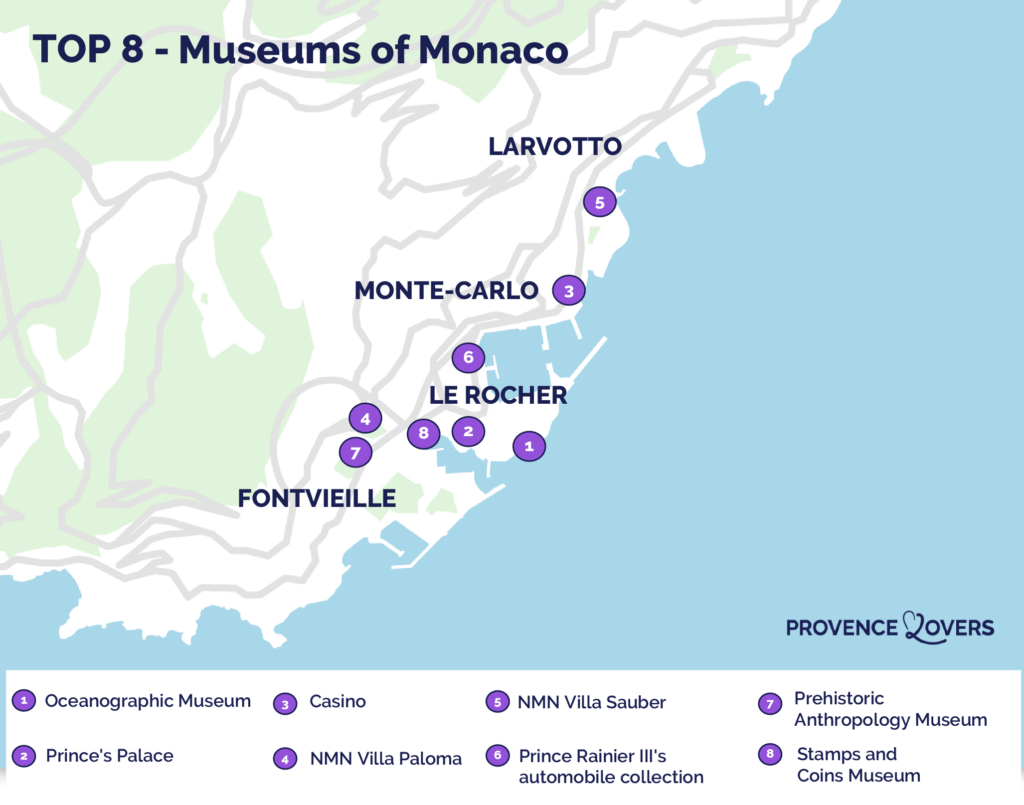
OUR TPS FOR RENTING YOUR CAR IN Provence
- Compare prices on our preferred platform: DiscoverCars – one of the best rated sites.
- Choose a car that is powerful enough (the roads are steep) but compact (some passages are narrow).
- Think of thecomplete insurance (some roads are tortuous and narrow).
- There is a lot of demand, book it early.
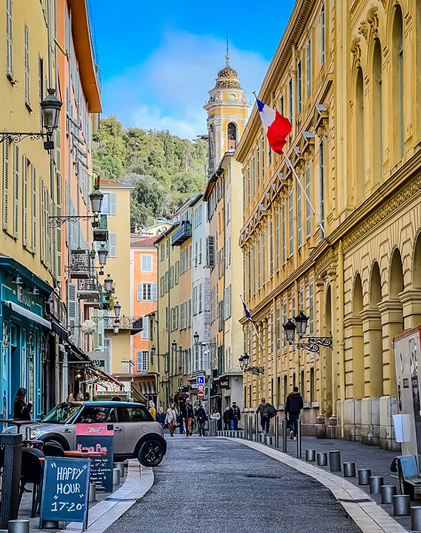
How to get there?
It’s a 25-30 minute walk from the station. We prefer to warn you that the main climb up to the Rocher is steep and very exposed to the sun. If you have difficulty getting around, we recommend you take the bus. The museum is easily accessible via bus lines 1 and 2, stop “Monaco Ville Le Rocher”. To plan your route, visit the official transport network website here. For a more entertaining itinerary, you can also opt for the little tourist train (departures and arrivals are in front of the museum).
For maximum comfort, why not opt for a multi-stop bus tour? The tour is free for children under 4! Book your tour now.

Parking
The nearest parking lot is Chemin des Pêcheurs. It is directly accessible via an escalator next to the museum entrance. It charges for parking of 1 hour or more, and is open 24 hours a day. You can also opt for the Quai Antoine Ier parking lot (15min walk).

Useful tips: duration, schedules, eating…
Best time to visit
The museum is one of the principality’s major tourist attractions. It welcomes 650,000 visitors every year. As far as possible, we therefore advise you to avoid school vacations and weekends (unless you wish to watch the fish feeding). As far as opening times are concerned, we recommend going in the morning or after 4pm.
To make sure you can visit, book your ticket now.

Length of visit and main difficulties
Allow 2 to 3 hours for the visit. You’ll need more if you want to take part in the complementary activities (escape game, animation, virtual reality…) offered by the museum. To find out more, visit the official website here.
Access to the museum for disabled visitors and baby carriages is located next to the outside ticket desks. Strollers can be stored in a dedicated area in the reception hall. Elevators provide access to the various floors. Only level minus 1 (aquarium) is less easily accessible, especially during peak periods.

Advice on how to visit
There is no imposed direction of visit. However, we recommend that you visit the aquarium first, as this is where the biggest crowds are concentrated. We started with the aquarium, then visited the 3 rooms on the 1st floor. We then took a tour of the panoramic terrace, before heading back downstairs to enjoy the first floor. We finished with the exhibition in the conference room, before exiting to the boutique.

A LITTLE MORE patience
All the photos, maps, information, good addresses to make your stay in Provence a success, will soon be gathered in a single ebook!
If you wish to be informed of the publication of our guide on Provence, subscribe:
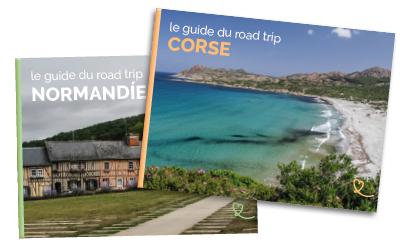
Visiting with children
The tour is perfectly suited to children. Special features and labels are provided for them throughout the tour, particularly in the aquarium. You can also find coloring pages and quizzes on the official website here. The museum is very committed to young visitors, offering them a wide range of activities:
- The “animals of the seaside” animation: you and your family can discover these species by dipping your hands into the touch pool in the educational room.
- Club Océano: this introductory course takes place over a week during the school vacations, and is free of charge. It introduces your child to marine biodiversity.
- Immerseave 360°: a virtual reality experience to explore the marine world through two films.
- Escape game: immersed in Prince Albert I’s boat, solve the riddles to complete your mission!
To find out more about this rich program, visit the museum’s official website here. What’s more, if you visit the museum during the school vacations, you may be able to watch the fish being fed!

Schedules and rates
The museum is open:
- October to March: daily, 10 am to 6 pm,
- April to June and September: daily from 10am to 7pm,
- July and August: daily from 9:30 am to 8 pm,
- Closed on Christmas Day and the Formula 1 Grand Prix weekend (usually late May).
Here are the prices:
- Full adult price: €19
- Reduced rate: €12 (students, children aged 4 to 17).
- Price for disabled visitors: €9
- Children under 4 free of charge.
For the latest prices and a complete list of tickets combined with other major sites (Palais Princier…), visit the official website here.

Catering
A restaurant (“La Terrasse”) is located on the museum’s panoramic terrace (level 2). You’ll have a beautiful sea view. There’s also a snack bar on this level, in the aquarium, and in front of the museum. For a more initiatory setting, we recommend the Petit Bar restaurant (5min walk), which you can find in our article on Monaco’s best restaurants.

Architecture turned towards the marine world
A “palace” of the seas
We were impressed by the museum’s imposing architecture and dimensions. It is over 85m high and 100m long, covering an area of 6500m2! No wonder it took 11 years to build. To fully appreciate its incredible cliff-side setting, we advise you to observe it from the Saint-Martin gardens.

Then take time to observe the sculptures surrounding the museum, such as Emma Salgadi’s Octopus (above). Look up to admire the façade. It was designed by French sculptor Gustave Dussart, who created 2 allegorical groups on either side: ” Le Secours ” and ” Le Progrès venant au secours de l’Humanité “. This was in line with the museum’s mission to promote science and protect the oceans. It was inaugurated in 1903. Can you spot the fish and crayfish decorating the façade?

Once inside, you’ll see that these ocean-themed decorative elements are present in every room. We were particularly impressed by the 1st floor landing, where we could see an octopus hanging from the ceiling and this mosaic floor. Representing all kinds of underwater species (corals, fish and this crab), we found it particularly beautiful!

Conference room and VIP lounge
Like the exterior architecture, the museum’s first floor impressed us with its vast dimensions. Once again, we had the feeling of being in a palace. We first passed through the Princesse-Alice hall, where we could see a beautiful mosaic paving representing a ship from Monaco’s fleet. Large paintings of seascapes also adorned the walls. We then entered the Salon d’Honneur, with its elegant marble columns and coffered ceiling. We came across this statue of Prince Albert I, depicting him as a pensive prince navigator.

We then moved on to the conference room, which impressed us with its wealth of decorative features. This sumptuous room is not just for conferences. When we went there, an exhibition by an animal and naturalist photographer was taking place. But we especially admired the hall, with its royal blue walls and the principality’s flag in a central position.

Be sure to look up at the coffered ceiling. You’ll see marine representations, framed by golden elements forming a shell. Once again, we were pleasantly surprised by the coherence of this architectural ensemble.

Innovative, fun scenography
Having benefited from a renovation program since 2010, the museum is now at the forefront of innovations in scenography. We could see this right from the first floor. Just prior to the outing, a number of features related to the current exhibition were installed. In cabins that reminded us of those on ships, visitors could create their own reportage at the end of the exhibition, taking a selfie and sharing it with as many people as possible. This shows the museum’s desire to interact with visitors in a playful way. The proof is in the pudding: you can also play an escape game on level minus 1!

However, it’s the Albert I room upstairs that most appealed to us with its scenography. Numerous innovative features (videos embedded in antique binoculars, portholes with projections, holograms…) enabled us to immerse ourselves in the history of the major scientific campaigns that led to the creation of the museum. Speaking of immersion, the museum offers a virtual reality experience, as well as a fully immersive room that we’re going to tell you all about!

Discovering oceanography
Oceanomania, or the cabinet of curiosities
This room on the 1st floor was a particular surprise. We were impressed by the number of marine-related objects on display, and with good reason! Despite the room’s considerable height (around 18m), there were shelves from floor to ceiling. Created by American artist Mark Dion in 2011, this cabinet of curiosities called “Oceanomania” is the world’s largest dedicated to oceanography. This modern yet traditional 19th-century scenography showcases the full diversity of our collections.

More than 1,000 objects are on display over 180m2: fossils, stuffed animals, precious books, paintings, drawings, as well as a large number of shells and tools. We loved watching them! In our opinion, this room is an excellent example of the museum’s desire to reconcile art and science.

The Albert I room
If you turn left from the cabinet of curiosities, you’ll come across the Albert I room. She wowed us with her innovative scenography. You’ll be amazed by the 27-metre-long recreated explorer ship in the center of the room. It’s not there by chance: the room features a retrospective of the principality’s oceanographic expeditions over the last 100 years!

You’ll follow the discoveries of Princes Albert I, Rainier III and Albert II. We really enjoyed the re-enactments on this tour. Take a look at Albert I’s scientific laboratory in his last ship, the Hirondelle! And don’t hesitate to take an active role in your visit by trying out some of the features on the tour (interactive boards, optical theaters, fake binoculars for viewing archive images, etc.).

Don’t forget to get inside the boat. You’ll follow in the footsteps of Prince Rainier III and the famous explorer and commander Jacques-Yves Cousteau. With the dimmed lights and the shape of the ship, you’d think you were in a sci-fi movie! You’ll then find stairs leading up to the first floor, dedicated to the climate challenges presented by Prince Albert II. Although this was our least favorite part of the tour, we did get a great overview of the room!

The Whale or “Immersion” room
To the right of the cabinet of curiosities is the Applied Oceanography room. This room is better known as the Whale Room, because of the skeleton hanging from its ceiling. We were stunned by this imposing frame, nearly 20m long! It comes from a cetacean (a fin whale) beached in 1896 on the Ligurian coast (which stretches from Menton to Genoa).

This room is also called “Immersion” because it is surrounded by projection walls almost 9m high. Exhibitions are organized to immerse visitors in a truly immersive experience. As an extension to the exhibition on the polar world that took place during our visit, we were immersed in the cold waters of the poles. Young and old alike had fun with the schools of fish projected onto the floor, which moved as soon as you stepped on them! We were won over by these large-scale interactive features. Book your ticket now to discover them!

The aquarium: a dive into the oceans
The shark lagoon
We continued our immersion in the underwater world with a visit to the aquarium (level minus 1). Our first stop was the shark lagoon, the aquarium’s largest tank, containing almost 400,000 liters of water at a height of 6m! Inaugurated in 2000, it features sharks, groupers, rays, turtles, as well as a multitude of tropical fish and live coral. Faithfully recreating an ecosystem, it offers a life-size vision of reef life.

The Mediterranean Sea
Just past the shark lagoon, you’ll enter a section of the aquarium dedicated to the Mediterranean Sea and its underwater species. Around 100 fish and 200 invertebrates are represented among the 650 found in the Mediterranean, making this a benchmark “collection”. You’ll be amazed by the richness of our shores, the colors of our marine flora, and the impressive size of our moray eels and octopus!

We learned a lot about certain species (big-bellied seahorses, slipper lobsters), but also about the state of this sea, which is particularly impacted and polluted by human activities (ocean acidification). This has resulted in the appearance of species from elsewhere, such as these constellated jellyfish, previously found only in Australia!

Tropical seas
The next section is dedicated to tropical seas. In our opinion, it’s the one that offers the most color and diversity. It’s also our favourite because there aren’t many of us who can observe this type of underwater wealth! For example, we discovered a multitude of corals, but also species we’d never seen before, like this long-nosed hawkfish. It caught our eye with its bright orange color!

We recommend that you take the time to observe the ponds carefully, so as not to miss out on certain species. We could have missed the Heteroconger hassi, which hide in their hole at the slightest sudden movement! Watching these lanky fish, also known as “garden eels”, was a particular source of amusement.

The sea turtle odyssey
The rest of the tour takes place partly outdoors. After passing by the kitchen, where meals are prepared for all the species in the aquarium, we discovered some diagrams on the life of turtles (reproduction, dangers linked to pollution…). Then we went out. This small part of the museum is located right next to the Jardins Saint-Martin. Overlooking the sea, it features two large pools and a panoramic terrace. Along the way, you’ll find information panels explaining, for example, the similarities between marine and terrestrial turtles, and the distribution of turtle species in the Mediterranean. As it was raining, we didn’t linger outside and didn’t manage to see the turtles!

Subscribe to our Newsletter
- Get away from it all with Region Lovers’ beautiful destinations!
- Once a month
- Advertising-free
Frequently asked questions
Where can I park to go to the Oceanographic Museum in Monaco?
The nearest parking lot is Chemin des Pêcheurs. It is directly accessible via an escalator next to the museum entrance. It charges for parking of 1 hour or more, and is open 24 hours a day. You can also opt for the Quai Antoine Ier parking lot (15min walk).
What events and activities are on offer at the museum?
The life of the museum is punctuated by a rich program. Major exhibitions are organized throughout the year, both in the Whale Room and on the first floor. There are plenty of other activities, including a game area and a virtual reality experience. Some are specially designed for children. Please refer to our “Visiting with children” section for more information. You can also visit the official website here.

Can we take photos inside the museum?
Yes, you can take photos and videos in the museum. However, to avoid disturbing the fish, it is forbidden to use the flash in the aquarium.
What tourist attractions are nearby?
Many tourist attractions can be found in the vicinity of Le Rocher. First of all, we recommend a visit to the Jardins Saint-Martin. We loved this green space adjacent to the museum! Afterwards, we recommend a visit to the cathedral, just a 5-minute walk away. Finally, we invite you to discover the magnificent Palais Princier, open in season.

PLAN YOUR TRIP TO THE Côte d’Azur
- Inspiration
The most beautiful landscapes in 30 photos
Best things to do on the Côte d’Azur
Most beautiful villages
Best beaches on the Côte d’Azur
Most beautiful gardens
Best boat tours (coming soon)
Most beautiful islands
Secret places

- Practical advice
Successful travel on the Côte d’Azur (coming soon)
Rent a car in Provence – in Nice – in Cannes – in Marseille – in Aix-en-Provence.
Itineraries: 5 days – 1 week – 10 days
Weekend ideas: best-of – romantic – luxury – unusual

- Where to stay
Where to stay on the Côte d’Azur
Best luxury hotels on the Côte d’Azur
Hotels by the sea
Best boutique-hotels



